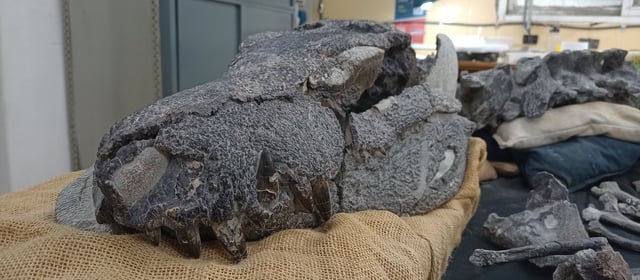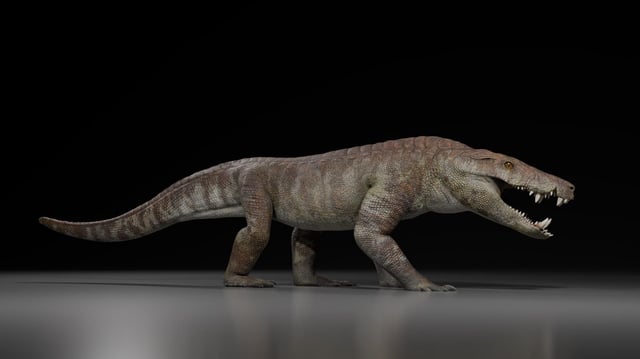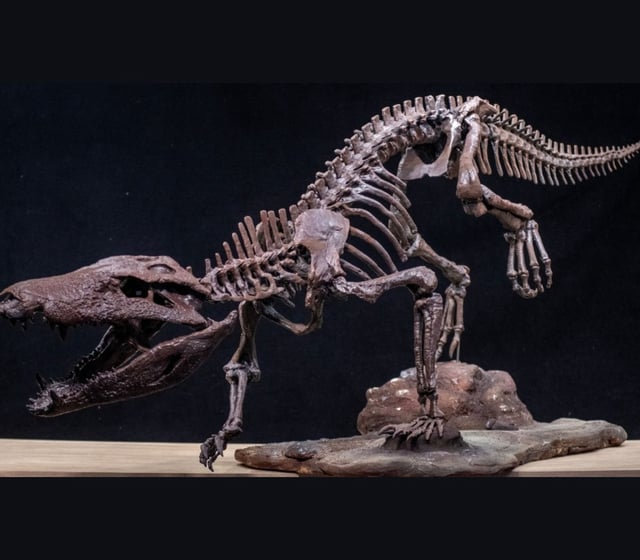Overview
- Recovered from the Maastrichtian Chorrillo Formation at Estancia Anita about 30 km southwest of El Calafate, the specimen dates to roughly 70 million years ago.
- The fossil includes a nearly complete skull and much of the skeleton, with a short, robust snout, more than 50 serrated teeth and large jaw‑muscle cavities indicating a very strong bite.
- Researchers estimate a length of about 3–3.5 meters and a mass near 250 kilograms, interpreting the animal as a largely terrestrial or semi‑aquatic apex predator.
- The species is reported as the first crocodiliform found in the Chorrillo Formation and the second‑largest predator known from that unit, likely able to take small‑to‑medium dinosaurs and compete with Maip macrothorax.
- Discovered on March 10, 2020 by CONICET technician Marcelo Isasi and prepared during the COVID‑19 pandemic, the find was analyzed by an international team from Argentina, Japan, Brazil and Portugal and formally published in PLOS One.



